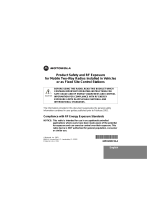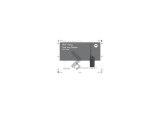Introduction
PRELIMINARY
-1
Introduction
Thank you for purchasing a
Motorola
XTN Series Radio.
Your radio is a product of Motorola’s
70 plus years of experience as a
world leader in the designing and
manufacturing of communications
equipment. The revised industrial
design reflects the heritage and
ruggedness of the XTN Series. The
XTN Series radios provide cost-
effective communications for
businesses such as retail stores,
restaurants, schools, construction
sites and more. Motorola
professional two-way radios are the
perfect communications solution for
all of today’s fast-paced industries.
Note: Please read this manual
carefully to ensure you know
how to properly operate the
radio before use.
Motorola
Consumer Products Division
1705 Belle Meade Court
Lawrenceville, GA 30043
Package Contents
• Radio
• Swivel Belt Holster
• NiMH Battery NTN8971
• 10-Hour Charger NNTN4021
• User's Guide
• Accessory Brochure
• Warranty Card
Motorola, the Stylized M Logo, and all other
trademarks indicated as such herein are
Trademarks of Motorola, Inc.
Reg. U.S. Pat. & Tm. Off.
© 2001 Motorola, Inc. All rights reserved.
Printed in the U.S.A. 08/01
For a copy of a large-print
version of this guide, or for
product-related questions,
please contact:
1-800-353-2729 U.S.A.
1-800-461-4575 Canada
1-888-390-6456 TTY (Text Telephone)
On the web, please refer to:
www.motorola.com/radios/professional
6881038B80.book Page -1 Thursday, August 30, 2001 5:33 PM
























